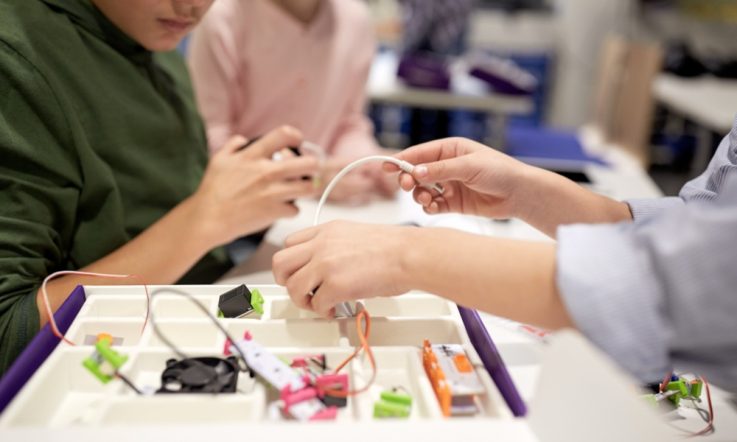Assessing global competence
In 2015, 193 countries committed to achieving the 17 Sustainable Development Goals (SDGs) of the United Nations – a shared vision of humanity that provides the missing piece of the globalisation puzzle.
The extent to which that vision becomes a reality will in no small way depend on what is happening in today's classrooms. Indeed, it is educators who hold the key to ensuring that the SDGs become a real social contract with citizens.
Goal 4, which commits to quality education for all, is intentionally not limited to foundation knowledge and skills, such as literacy, mathematics and science, but emphasises learning to live together sustainably. This has inspired the OECD Programme for International Student Assessment (PISA) to include global competence in its metrics for quality, equity and effectiveness in education. PISA will assess global competence for the first time ever in 2018. PISA conceives of global competence as a multidimensional, lifelong learning goal. Globally competent individuals can examine local, global and intercultural issues, understand and appreciate different perspectives and world views, interact successfully and respectfully with others, and take responsible action toward sustainability and collective wellbeing.
Many teachers will have mixed feelings about this: is this just one more demand placed on their shoulders that will further dilute what students learn and contribute to making curricula a mile-wide but an inch-deep? And when the results from PISA will come out, will teachers be blamed for things they had no real opportunity to teach in any depth? Before judging this, it is worth having a look at what global competence as measured by PISA actually entails.
First, PISA expects that students can examine issues of local, global and cultural significance. This refers to the ability to combine knowledge about the world with critical reasoning whenever people form their own opinions about a global issue. Globally competent students can draw on and combine the disciplinary knowledge and modes of thinking acquired in school to ask questions, analyse data and arguments, explain phenomena, and develop a position regarding a local, global or cultural issue. They can also access, analyse and critically evaluate messages delivered through the media, and can create new media content.
Second, PISA looks at whether students understand and appreciate the perspectives and world views of others. This highlights a willingness and capacity to consider global problems from multiple viewpoints. As individuals acquire knowledge about other cultures' histories, values, communication styles, beliefs and practices, they begin to recognise that their perspectives and behaviours are shaped by many influences, that they are not always fully aware of these influences, and that others have views of the world that are profoundly different from their own. Engaging with different perspectives and world views requires individuals to examine the origins and implications of others' and their own assumptions. This, in turn, implies a respect for and interest in the people who acknowledge and appreciate the qualities that distinguish individuals from one another are less likely to tolerate acts of injustice in their daily interactions. On the other hand, people who fail to develop this competence are considerably more likely to internalise stereotypes, prejudices and false heuristics about those who are ‘different'.
Third, PISA looks at the extent to which students are able to engage appropriately and effectively across cultures. Globally competent people can adapt their behaviour and communication to interact with individuals from different cultures. They engage in respectful dialogue, want to understand others, and try to include marginalised groups. This dimension emphasises individuals' capacity to bridge differences with others by communicating in ways that are open, appropriate and effective. ‘Open' interactions mean relationships in which all participants demonstrate sensitivity towards, curiosity about, and a willingness to engage with others and their perspectives. ‘Appropriate' refers to interactions that respect the cultural norms of both parties. In ‘effective' communication, all participants can make themselves understood and understand the other.
Last but not least, PISA looks at young people's role as active and responsible members of society, and refers to individuals' readiness to respond to a given local, global or intercultural issue or situation. Globally competent people create opportunities to take informed, reflective action and have their voices heard. Taking action might imply standing up for a schoolmate whose human dignity is in jeopardy, initiating a global media campaign at school, or disseminating a personal opinion about the refugee crisis through social media. Globally competent people are engaged to improve living conditions in their own communities and also to build a more just, peaceful, inclusive and environmentally sustainable world.
It seems hard to deny the critical importance of these competences, particularly in a country that is as outward-looking and globally interconnected as Australia. But that alone does not answer the question of how teaching global competence can be reconciled with the myriad other responsibilities schools already have. However, for many children, school is the first place where they encounter the full diversity of society, so schools need to play a crucial role in this regard. Schools can provide opportunities for young people to critically examine developments that are significant to both the world at large and to their own lives. They can teach students how to use digital information and social media platforms critically and responsibly. Schools can also encourage intercultural sensitivity and respect by encouraging students to engage in experiences that nurture an appreciation for diverse peoples, languages and cultures.
And it certainly does not mean adding new school subjects, but rather how we integrate aspects of global competence into disciplinary contexts. Imagine Elizabeth. In her history course, she learns about industrialisation and economic growth in developing countries, and how these have been influenced by foreign investments. She learns that many girls of her age work in poor conditions in factories for up to 10 hours a day, instead of going to school. Her teacher encourages each student to bring one item of clothing to class, and look at the label to see where it was manufactured. She is surprised to notice that most of her clothes were made in Bangladesh. She wonders under what conditions her clothes were made. She looks at the websites of various high-street branding shops to see if the websites can tell her about their manufacturing standards and policies. She discovers that some clothing brands are more concerned with human rights in their factories than others, and she also discovers that some clothing brands have a long history of poor conditions in their factories. She reads different journalistic articles about the issue, and watches a short documentary on YouTube. Based on what she discovers she starts to buy fair-trade clothing, and becomes an advocate for ethically responsible manufacturing.
That leaves the question for how PISA actually assesses global competence. In 2018, PISA will make a first start with a two-part assessment consisting of a cognitive test and a background questionnaire. The cognitive assessment elicits students' capacities to critically examine news articles about global issues; recognise outside influences on perspectives and world views; understand how to communicate with others in intercultural contexts; and identify and compare different courses of action to address global and intercultural issues. In the background questionnaire, students will be asked to report how familiar they are with global issues; how developed their linguistic and communication skills are; to what extent they hold certain attitudes, such as respect for people from different cultural backgrounds; and what opportunities they have at school to develop global competence. Answers to the school and teacher questionnaires will provide a comparative picture of how education systems are integrating international and intercultural perspectives throughout the curriculum and in classroom activities. If you would like to try some of this out in your own classroom, PISA will be happy to share the questionnaires with you.
At the OECD, we believe that this assessment offers a tangible opportunity to provide the global community with the data it needs to build more peaceful, equitable and sustainable societies through education. It will provide a comprehensive overview of education systems' efforts to create learning environments that encourage young people to understand one another and the world beyond their immediate environment, and to take action towards building cohesive and sustainable communities. It will help the many teachers who work every day to combat ignorance, prejudice and hatred, which are at the root of disengagement, discrimination and violence.
Some have already raised concerns about the feasibility of measuring students' readiness to engage with the world through an international test. International comparisons are never easy, and they are not perfect, particularly when it comes to measuring such complex competences. But without quality data, it will be difficult to initiate a fruitful, global dialogue about what works in education.



